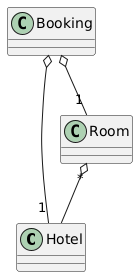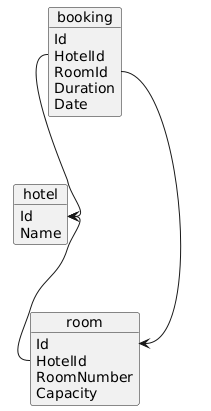Table Module
A Table Module represents a single instance responsible for managing the business logic associated with all rows within a specific database table or view.
One-to-one mapping principle is adhered, where each database table is directly linked to a corresponding class within the domain logic layer. Clients interact with only a single instance of this class for each table.
Comparing to Transaction Script, the Table Module pattern is more object-oriented and utilizes classes to represent tables within the database.Generally with Table Module pattern it is easier and faster to organized and create new code.
However, the Table Module pattern remains a data-centric approach and lacks a clear separation between business logic and data access logic.
The Table Module pattern is well-suited for small applications with simple business logic and a limited number of tables.
Using this pattern, it becomes challenging to test the business logic effectively due to the tight coupling between business logic and data access logic.
Managing database transactions can be difficult because the data access logic is intertwined with the business logic.
To facilitate the management of database transactions, an additional layer – the Service Layer – can be introduced above the Domain Layer. And within the Service Layer, the Unit of Work pattern can be employed to effectively manage database transactions.
Example
In this example, in the PresentationLayer has several methods to imitate real-world application.
The CreateHotelWithRoomsAndBookings method creates a hotel with two rooms and two bookings.
The CancellAllBookigsInAllHotes method cancels all bookings in all hotels.
In the DomainLayer, there are three classes - table modules: Hotel, Room, and Booking.
The Hotel class can create a hotel, get a hotel by id, get all hotels, save a hotel, and cancel all bookings in all hotels.
The Room class can create a room and save a room.
The Booking class can create a booking, save a booking, and remove all bookings by hotel id.
Domain Model schema

DB schema

using DataAccessLayer;
using DomainLayer;
using Microsoft.Data.Sqlite;
using Microsoft.EntityFrameworkCore;
using PresentationLayer;
await new MainController().Main();
namespace PresentationLayer
{
class MainController
{
public async Task Main()
{
using var dbContext = new AppDbContext();
var isCreated = await dbContext.Database.EnsureCreatedAsync();
var script = dbContext.Database.GenerateCreateScript();
await CreateHotelWithRoomsAndBookings();
await CancellAllBookigsInAllHotes();
}
private async Task CreateHotelWithRoomsAndBookings()
{
using var dbContext = new AppDbContext();
var hotel = await Hotel.CreateHotel(dbContext, "Hotel 1");
var room1 = await Room.CreateRoom(dbContext, hotel.Id, 101, 2);
var room2 = await Room.CreateRoom(dbContext, hotel.Id, 102, 3);
var booking1 = await Booking.CreateBooking(dbContext, room1.Id, hotel.Id, DateTime.Now.AddDays(1), 2);
var booking2 = await Booking.CreateBooking(dbContext, room2.Id, hotel.Id, DateTime.Now.AddDays(2), 3);
}
private async Task CancellAllBookigsInAllHotes()
{
using var dbContext = new AppDbContext();
await new Hotel(dbContext).CancellAllBookingsInAllHotels();
}
}
}
namespace DomainLayer
{
public class Hotel(AppDbContext dbContext)
{
private Hotel(AppDbContext dbContext, string name) : this(dbContext)
{
this.Id = Guid.NewGuid();
this.Name = name;
}
public static async Task<Hotel> CreateHotel(AppDbContext dbContext, string name)
{
var hotel = new Hotel(dbContext, name);
await hotel.Save();
return hotel;
}
public Guid Id { get; set; }
public string Name { get; set; }
public ValueTask<Hotel?> TryGetById(Guid id) => dbContext.Hotels.FindAsync(id);
public async Task<IEnumerable<Hotel>> GetAllHotels() => await dbContext.Hotels.ToListAsync();
public async Task Save()
{
await dbContext.Hotels.AddAsync(this);
await dbContext.SaveChangesAsync();
}
public async Task CancellAllBookingsInAllHotels()
{
var hotels = await GetAllHotels();
foreach (var hotel in hotels)
{
await new Booking(dbContext).RemoveAllBookingsByHotelId(hotel.Id);
}
}
}
public class Room(AppDbContext dbContext)
{
private Room(AppDbContext dbContext, Guid hotelId, int roomNumber, int capacity) : this(dbContext)
{
this.Id = Guid.NewGuid();
this.HotelId = hotelId;
this.RoomNumber = roomNumber;
this.Capacity = capacity;
}
public static async Task<Room> CreateRoom(AppDbContext dbContext, Guid hotelId, int roomNumber, int capacity)
{
var room = new Room(dbContext, hotelId, roomNumber, capacity);
await room.Save();
return room;
}
public Guid Id { get; set; }
public Guid HotelId { get; set; }
public int RoomNumber { get; set; }
public int Capacity { get; set; }
public async Task Save()
{
await dbContext.Rooms.AddAsync(this);
await dbContext.SaveChangesAsync();
}
}
public class Booking(AppDbContext dbContext)
{
private Booking(AppDbContext dbContext, Guid roomId, Guid hotelId, DateTime date, int duration) : this(dbContext)
{
// Execute business logic here
if (duration < 1)
{
throw new ArgumentException("Duration must be at least 1 day");
}
if (date < DateTime.Now)
{
throw new ArgumentException("Date must be in the future");
}
this.Id = Guid.NewGuid();
this.RoomId = roomId;
this.HotelId = hotelId;
this.Date = date;
this.Duration = duration;
}
public static async Task<Booking> CreateBooking(AppDbContext dbContext, Guid roomId, Guid hotelId, DateTime date, int duration)
{
var booking = new Booking(dbContext, roomId, hotelId, date, duration);
await booking.Save();
return booking;
}
public Guid Id { get; set; }
public Guid RoomId { get; set; }
public Guid HotelId { get; set; }
public DateTime Date { get; set; }
public int Duration { get; set; }
public async Task Save()
{
await dbContext.Bookings.AddAsync(this);
await dbContext.SaveChangesAsync();
}
public async Task RemoveAllBookingsByHotelId(Guid hotelId)
{
var bookings = await dbContext.Bookings.Where(b => b.HotelId == hotelId).ToListAsync();
dbContext.Bookings.RemoveRange(bookings);
await dbContext.SaveChangesAsync();
}
}
}
namespace DataAccessLayer
{
public class AppDbContext : DbContext
{
public DbSet<Hotel> Hotels { get; set; }
public DbSet<Booking> Bookings { get; set; }
public DbSet<Room> Rooms { get; set; }
protected override void OnConfiguring(DbContextOptionsBuilder optionsBuilder)
{
var keepAliveConnection = new SqliteConnection("DataSource=myshareddb;mode=memory;cache=shared");
keepAliveConnection.Open();
optionsBuilder.UseSqlite(keepAliveConnection);
}
protected override void OnModelCreating(ModelBuilder modelBuilder)
{
modelBuilder.Entity<Hotel>()
.ToTable("hotel");
modelBuilder.Entity<Room>()
.ToTable("room");
modelBuilder.Entity<Booking>()
.ToTable("booking");
}
}
}
CREATE TABLE "booking" (
"Id" TEXT NOT NULL CONSTRAINT "PK_booking" PRIMARY KEY,
"RoomId" TEXT NOT NULL,
"HotelId" TEXT NOT NULL,
"Date" TEXT NOT NULL,
"Duration" INTEGER NOT NULL
);
CREATE TABLE "hotel" (
"Id" TEXT NOT NULL CONSTRAINT "PK_hotel" PRIMARY KEY,
"Name" TEXT NOT NULL
);
CREATE TABLE "room" (
"Id" TEXT NOT NULL CONSTRAINT "PK_room" PRIMARY KEY,
"HotelId" TEXT NOT NULL,
"RoomNumber" INTEGER NOT NULL,
"Capacity" INTEGER NOT NULL
);
Pros Table Model pattern
Simplicity:
- Relatively straightforward to implement, especially for applications with a strong focus on database operations.
Database-Centric:
- Leverages the strengths of relational databases and their query languages (e.g., SQL).
Cons Table Model pattern
Limited Object-Oriented Features
- Doesn't fully embrace object-oriented principles like
inheritanceandpolymorphism. - Can lead to
procedural codeand limited flexibility.
Tight Coupling to Database
- Changes in the database schema can significantly impact the table modules.
- Difficult to adapt to changes in data storage mechanisms.
Limited Reusability:
- Business logic is often tightly coupled to specific database tables.
- Reusing logic across different use cases can be challenging.
Scalability Issues:
- As the application grows and complexity increases, managing numerous table modules can become cumbersome.